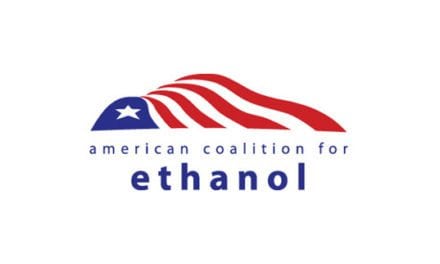More Crude Oil Added to US Stocks
- Crude oil break-even price estimated at $65
- Refinery use now 92.3 per cent of capacity
- Expectations of more petroleum products
- Natural gas demand at seasonal low
Sincerely, Alan Levine Chairman, Powerhouse
Table covers crude oil and principal products. Other products, including residual fuel oil and “other oils” are not shown, and changes in the stocks of these products are reflected in “Total Petroleum Products.” Statistics Source: Energy Information Administration “Weekly Petroleum Status Report” available at www.eia.doe.gov
The Matrix
Prices rallied again in the face of growing crude oil inventories. A theme in recent weeks continues with the U.S. continueing to produce crude oil at record levels and accumulating inventories at levels not seen for nearly a century. Nonetheless, prices are showing remarkable strength. Crude oil prices added around six dollars during the week ending April 17. Analysts are focused on a breakeven price of $65, now within sight. And if $65 is average breakeven, then there is much production profitable at lower prices.
Economics mandates open markets to be self-correcting. Much has been made of slowing production and the apparent triumph of Saudi Arabia’s plan to contain the emerging U.S. shale oil industry. As prices rise, the impetus to reduce capital spending, so widely reported, should fade. Renewed exploration/development will be reflected in production and should cap a significant further crude oil price advance.
Substantial stocks of crude oil translate into potential petroleum product supplies. This can be seen in the dramatic increase of refinery use which is now at 92.3 per cent of capacity. Spring refinery turnaround is coming to an end. This, in part, supports the rally in crude oil prices. It also foreshadows the make of added quantities of gasoline and ULSD.
Crack spreads are struggling and the recent rally in the May gasoline crack spread to $25 falls far short of its March high of $30.62. Time is running out for gasoline crack spread bulls. Powerhouse does not anticipate another significant gas crack rally this spring as new gasoline stocks meet an already well supplied market.
Supply/Demand Balances
Supply/demand data in the United States for the week ending April 10, 2015 were released by the Energy Information Administration.
Total commercial stocks of petroleum increased 7.2 million net barrels during the week ending April 10, 2015.
Builds were reported in stocks of fuel ethanol, K-jet, distillate fuel oil, residual fuel oil, propane, and other oils. Gasoline stocks saw a decline.
Crude oil supplies in the United States increased to 483.7 million barrels, a build of 1.3 million barrels.
Crude oil supplies increased in all PAD Districts but PADD 1 (East Coast), which declined 1.2 million barrels. PADD 2 (Midwest) crude oil stocks grew 0.3 million barrels. Gulf Coast facilities added 0.6 million barrels to storage, increasing regional supply to 237.0 million barrels. PADD 4 (Rockies) stocks increased 0.2 million barrels and PADD 5 (West Coast) added 1.4 million barrels.
Cushing, Oklahoma inventories rose 1.3 million barrels. This puts Cushing storage at 61.5 million barrels.
Domestic crude oil production decreased by 20,000 barrels daily. Daily production for the week ending April 10 was 9.384 million barrels. Crude oil imports averaged 7.148 million barrels per day, a daily decrease of 1.069 million barrels.
Refineries used 92.3 per cent of capacity, an increase of 2.2 percentage points from the previous week.
Crude oil inputs to refineries rose by 283,000 barrels daily; there were 16.212 million barrels per day of crude oil run to facilities. Gross inputs, which include blending stocks, increased 392,000 barrels per day to 16.513 million barrels daily.
Total petroleum product inventories saw an increase of 5.9 million barrels. Gasoline stocks declined 2.1 million barrels.
Total product demand decreased 128,000 thousand barrels daily to 18.995 million barrels.
Demand for gasoline rose by 304,000 barrels per day to 8.914 million barrels daily.
Distillate fuel oil supply increased 2.0 million barrels. Stocks are 128.9 million barrels. National demand was reported at 3.807 million barrels per day during the report week. This was a weekly decrease of 408,000 barrels daily.
Propane stocks rose 2.1 million barrels. There are 60.0 million barrels in storage. Current demand is estimated at 868 thousand barrels per day, down 293,000 barrels daily from the previous report week.
Natural Gas
According to EIA: The net injection reported for the week ending April 10 was 63 Bcf, up from 15 Bcf last week. This compares with the five-year average net increase of 35 Bcf for that week and last year’s net increase of 22 Bcf. Working gas inventories for the storage week totaled 1,539 Bcf, 692 Bcf (81.7%) higher than last year at this time and 145 Bcf (8.6%) lower than the five-year (2010-14) average.
The injection was larger than expectations. Analysts had anticipated additions of 53 Bcf. Nonetheless, prices rallied, challenging resistance at $2.71. The rally may have reflected shifting fundamentals. There is little reason to be bearish according to some analysts. Demand for power and the gas use that goes with it is at a seasonal low and is likely to grow with summer heat. Nuclear plant shutdowns are beginning as well.
Futures trading involves significant risk and is not suitable for everyone. Transactions in securities futures, commodity and index futures and options on future markets carry a high degree of risk. The amount of initial margin is small relative to the value of the futures contract, meaning that transactions are heavily “leveraged”. A relatively small market movement will have a proportionately larger impact on the funds you have deposited or will have to deposit: this may work against you as well as for you. You may sustain a total loss of initial margin funds and any additional funds deposited with the clearing firm to maintain your position. If the market moves against your position or margin levels are increased, you may be called upon to pay substantial additional funds on short notice to maintain your position. If you fail to comply with a request for additional funds within the time prescribed, your position may be liquidated at a loss and you will be liable for any resulting deficit. Past performance may not be indicative of future results. This is not an offer to invest in any investment program.Vol. PH 04 NO. 16
Was this memo helpful? We’d like your feedback. Please respond to [email protected] Copyright © 2014 Powerhouse, All rights reserved.











